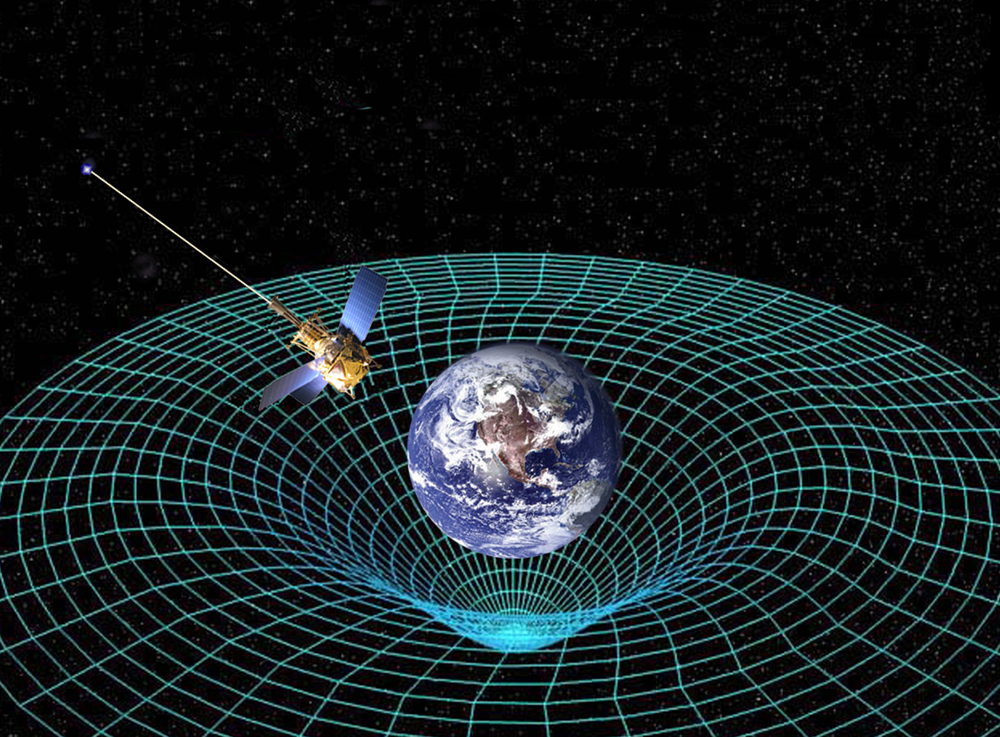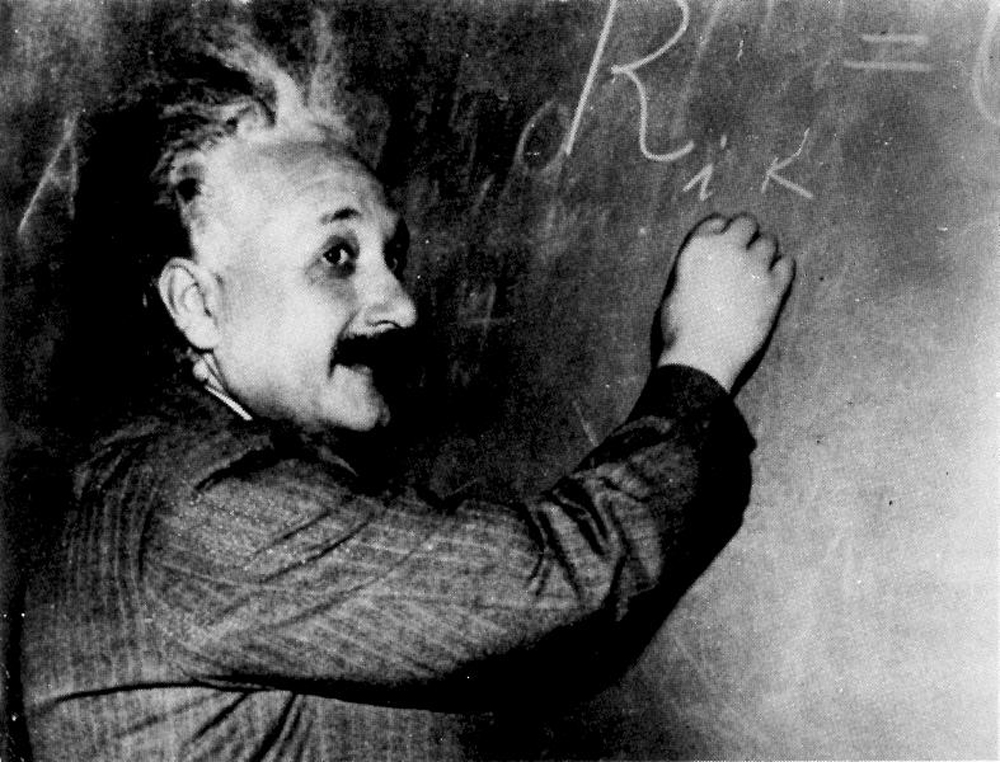
Albert Einstein's theory of general relativity has held up pretty well after a century out in the world.
The famous theory, which Einstein published in 1915, remains the bedrock upon which scientists' understanding of the origin and evolution of the universe rests. It continues to inspire research into some of the most fundamental unanswered questions in physics and astronomy.
General relativity "is now, I think, routinely accepted as the foundation of our description of the universe at large, which we call cosmology; of black holes, of neutron stars and of small corrections to the orbits of planets and spacecraft in our own solar system," said Roger Blandford of the Kavli Institute for Particle Astrophysics and Cosmology at Stanford University. [Einstein's Theory of General Relativity Explained (Infographic)]
The nature of gravity

General relativity adds gravity to the theory of special relativity, which Einstein published in 1905. Special relativity posits that the laws of physics are the same for all nonaccelerating observers, and that the speed of light in a vacuum never changes, even if the observer or the light source is moving.
Special relativity laid out the relationship between energy and mass, in history's most famous equation: E = mc2. ("E" is energy; "m" is mass, and "c" is the speed of light in a vacuum — roughly 671 million mph, or 1.08 billion km/h). The theory also unified space and time into a four-dimensional "space-time."
General relativity expanded on this latter idea, explaining that matter warps space-time, much as a bowling ball set down on a bed creates a depression in the sheets. This monumental insight did not come to Albert Einstein easily; he earned his way to it, over a decade of intense thought and hard work.
"He had to retrace his steps. He proposed things which he subsequently retracted. But he kept on going," Blandford told Space.com. "He was guided not by mathematical ideas or mathematical techniques. He was guided first and foremost by physics intuition; that extraordinarily powerful physics intuition which had served him so well in the past did not let him down here."
Sign up for the Live Science daily newsletter now
Get the world’s most fascinating discoveries delivered straight to your inbox.
General relativity characterizes gravity not as an innate force acting on objects but rather the consequence of space-time's curvature. (Imagine a marble rolling down the incline created by the bowling ball on the bed.)
It's a powerful, radical idea — and it has stood up to intense scrutiny for a century now, Blandford writes in a special review article published online today (March 5) in the journal Science.
Confirmation from many quarters
General relativity predicts that light will take a curved path around a massive object such as a galaxy cluster, which warps the fabric of space-time significantly. [The History & Structure of the Universe (Infographic)]
This has indeed been observed; astronomers routinely use "gravitational lenses" to study faraway light sources. In fact, on a smaller scale, the phenomenon even helps planet hunters search for worlds beyond Earth's solar system. (Exoplanets can sometimes be detected by studying how their star systems bend light from background objects.)
Peculiarities in the orbit of Mercury around the sun also back up general relativity.
"It explained the anomalous precession of Mercury's perihelion, or the rotation of the line joining the sun to the point of closest approach of the planet," Blandford writes in the Science review article. "Einstein used general relativity to explain a ~10 percent discrepancy in the precession attributable to the gravitational pulls of the other planets, ~43 arc sec per century. The agreement today is better than 10−4."
Other types of observational evidence have also helped put general relativity on firm footing, Blandford said.
"We've tested it in many, many different ways," he said. "I think it's fair to say that there's no credible measurement or observation that causes one to doubt it within its domain of applicability."
A dark universe

General relativity also implies that the vast majority of the universe is composed of stuff that humans cannot detect directly or (at this point) even understand, David Spergel of Princeton University writes in another review article in the same issue of Science.
Careful study of the motion of matter and light throughout the universe has revealed that "normal" matter alone cannot explain space-time's curvature patterns, Spergel notes. Indeed, observations suggest that just 5 percent of the universe is familiar atomic matter, while 25 percent is dark matter and about 70 percent is dark energy.
Dark matter neither emits nor absorbs light, betraying its existence only through its gravitational effects. Dark energy, meanwhile, is a mysterious force that's associated with empty space and is thought to be responsible for the accelerating expansion of the universe.
In 1917, Einstein inserted a term called the "cosmological constant" into general relativity, as a repulsive force that would counteract gravity and achieve a static universe (which was the prevailing view of the universe's nature at the time). After astronomer Edwin Hubble's observations in 1929 famously showed that the universe is actually expanding, Einstein dropped the cosmological constant, allegedly deeming it the "biggest blunder" of his life.
But the constant looks prescient now that astronomers are grappling with the nature of dark energy.
"Why is the universe accelerating? The most studied possibility is that the cosmological constant (or equivalently, the vacuum energy of empty space) is driving cosmic acceleration," Spergel writes in the Science article. "Another possibility is that there is an evolving scalar field that fills space (like the Higgs field or the inflaton field that drove the rapid early expansion of the universe). Both of these possibilities are lumped together in 'dark energy.'
"Because all of the evidence for dark energy uses the equations of general relativity to interpret our observations of the universe's expansion and evolution, an alternative conclusion is that a new theory of gravity is needed to explain the observations," he adds. "Possibilities include modified gravity theories with extra dimensions."
The future
General relativity should continue to shape the efforts of physicists, cosmologists and astronomers far into the future, Blandford said.
For example, researchers will keep using the theory to gain a better understanding of black holes, neutron stars and other celestial bodies and phenomena. Scientists will also continue probing the nature of dark energy and dark matter, in an effort to understand the universe at the broadest scales.
Finally, and perhaps most excitingly, researchers will keep trying to unify general relativity with quantum mechanics, to marry the world of the very large with that of the very small. This grand and longed-for "theory of everything" has eluded physicists thus far, but Blandford said he thinks it's achievable.
"There are many exciting ideas there," he said. "I'll be an optimist and hope that my colleagues can pull this off."
Follow Mike Wall on Twitter @michaeldwall and Google+. Follow us @Spacedotcom, Facebook or Google+. Originally published on Space.com.











